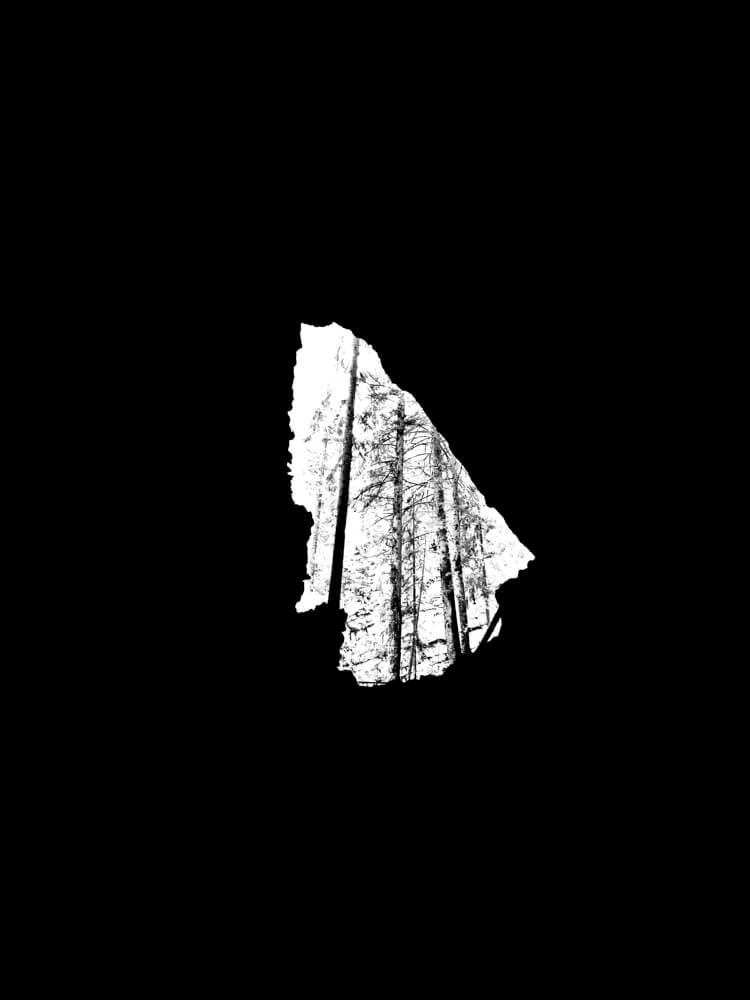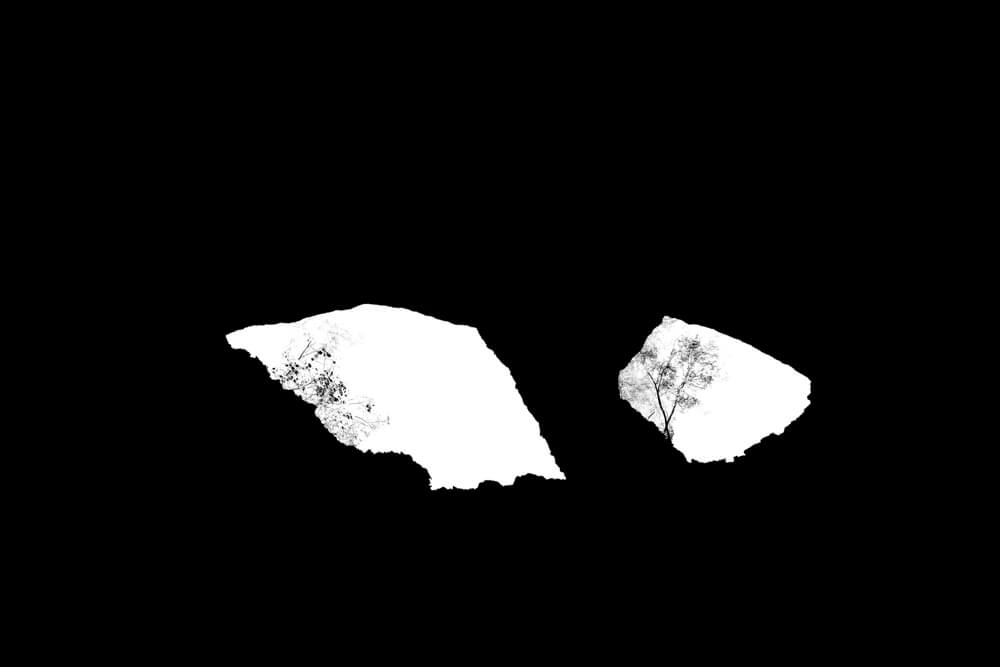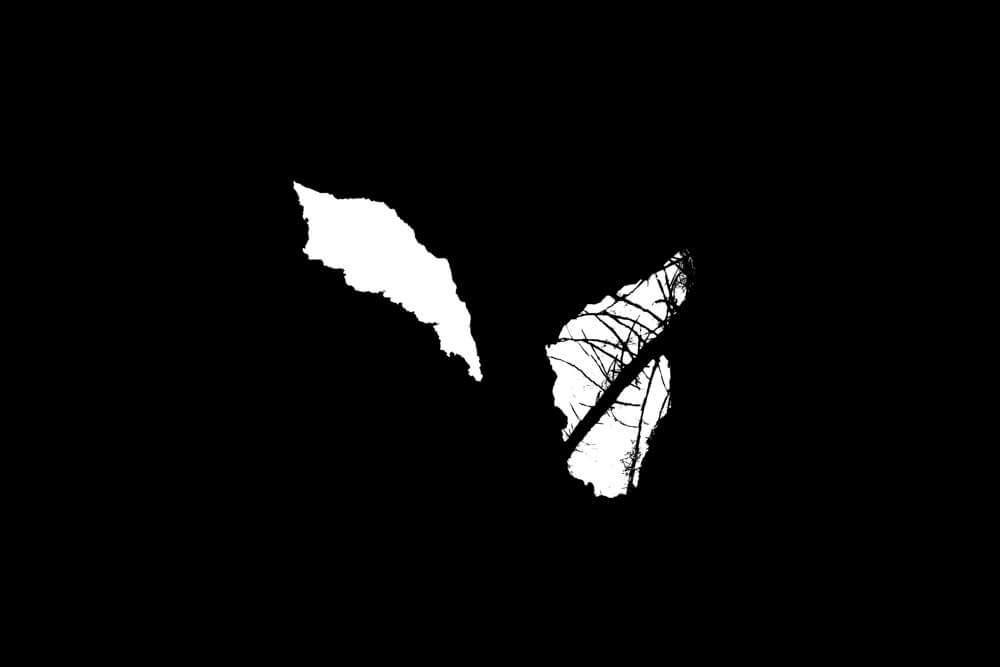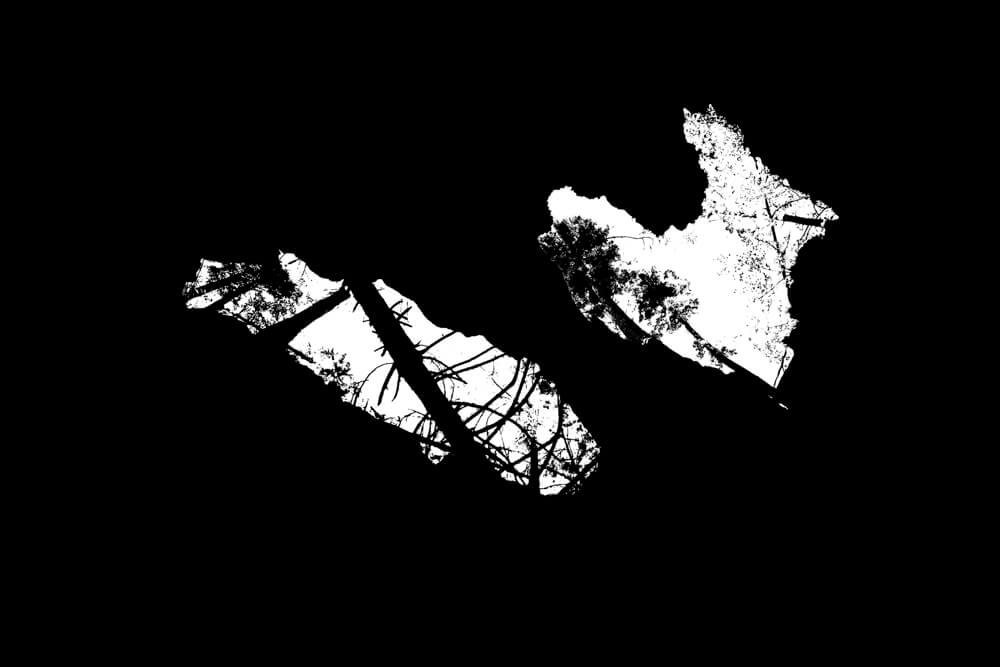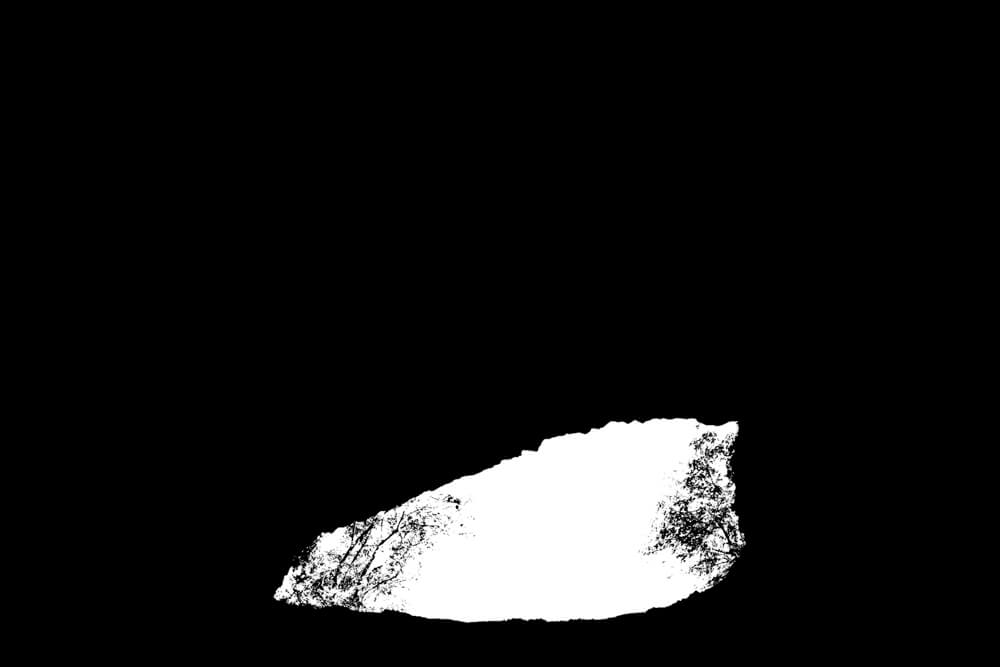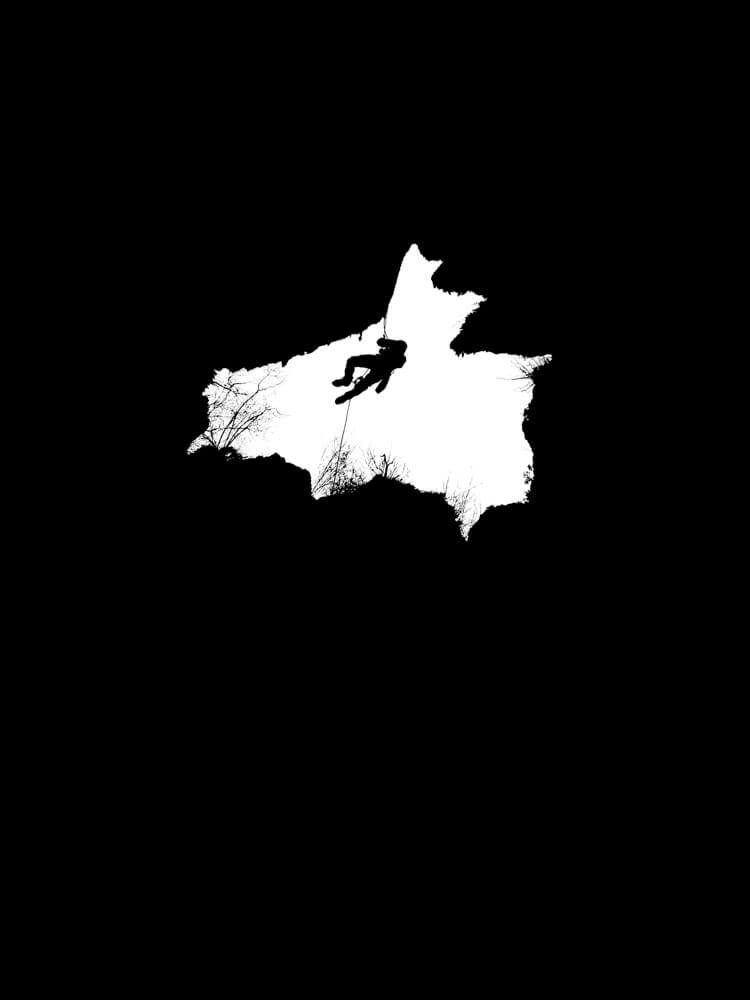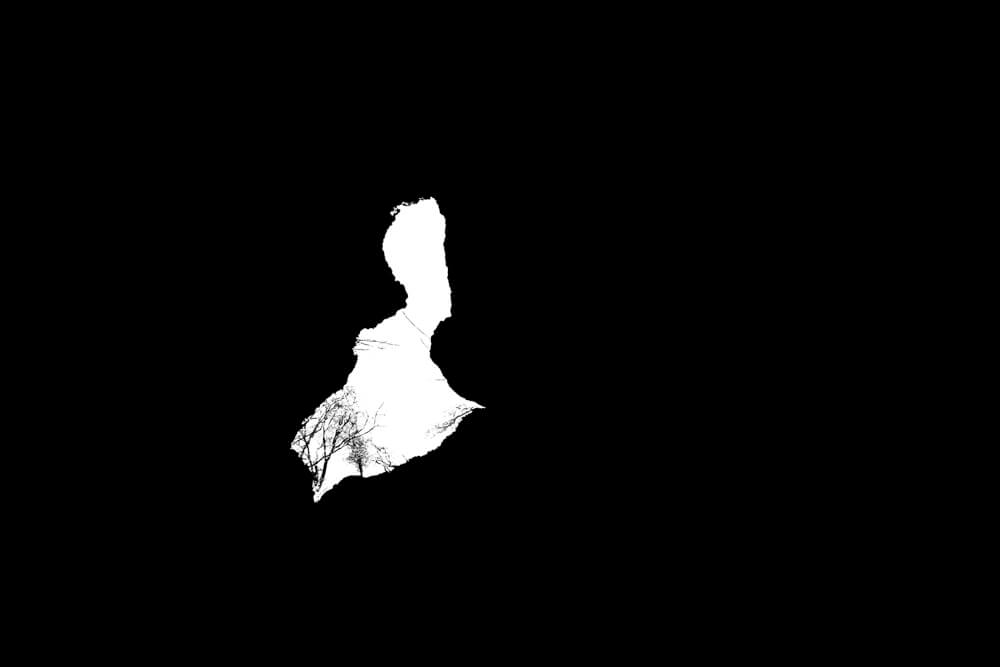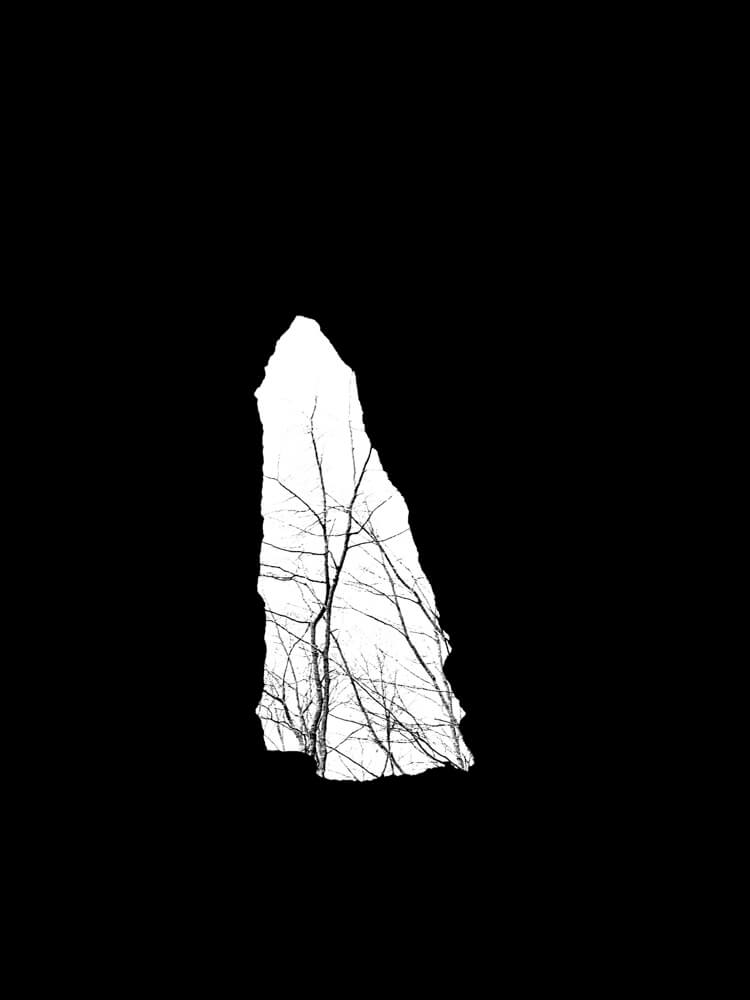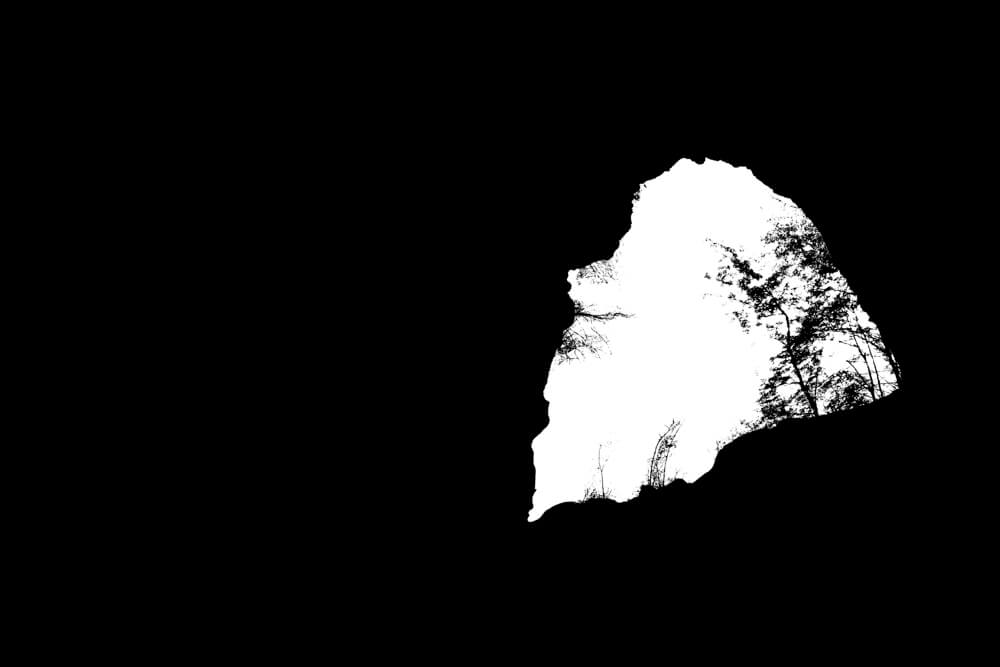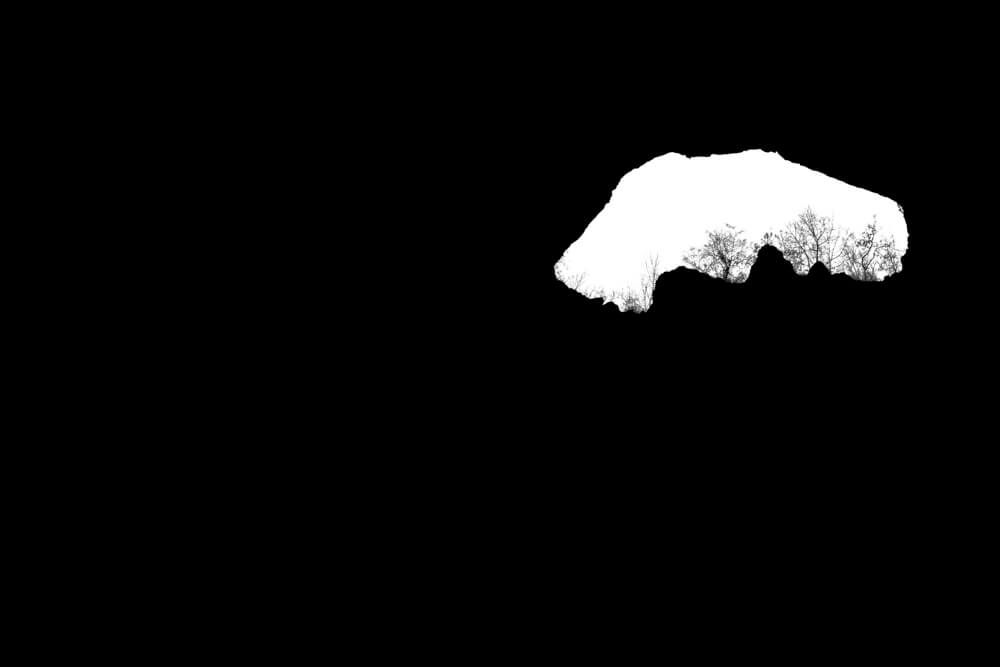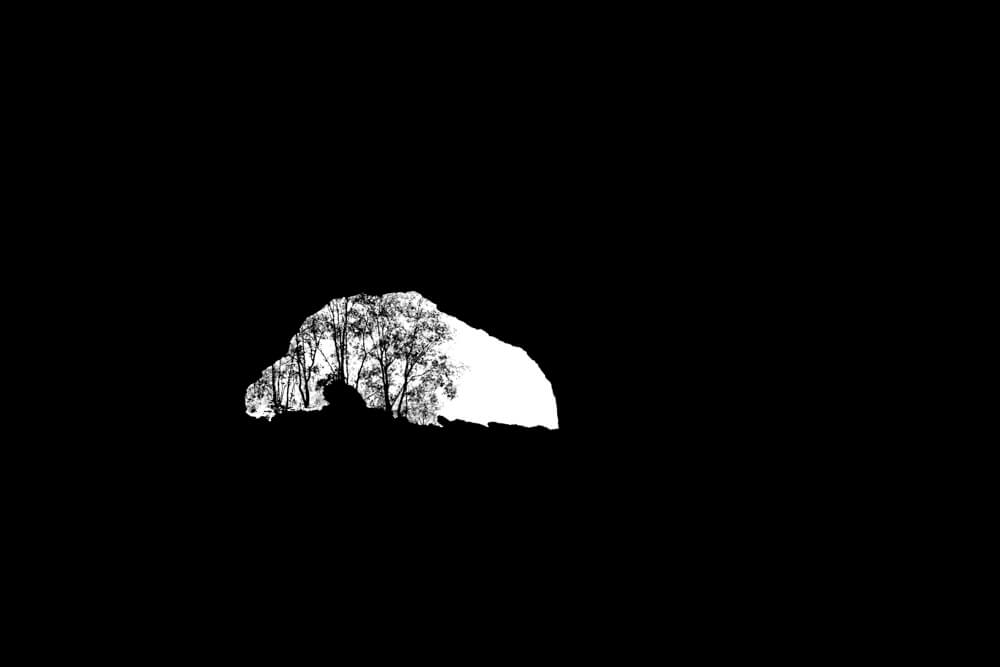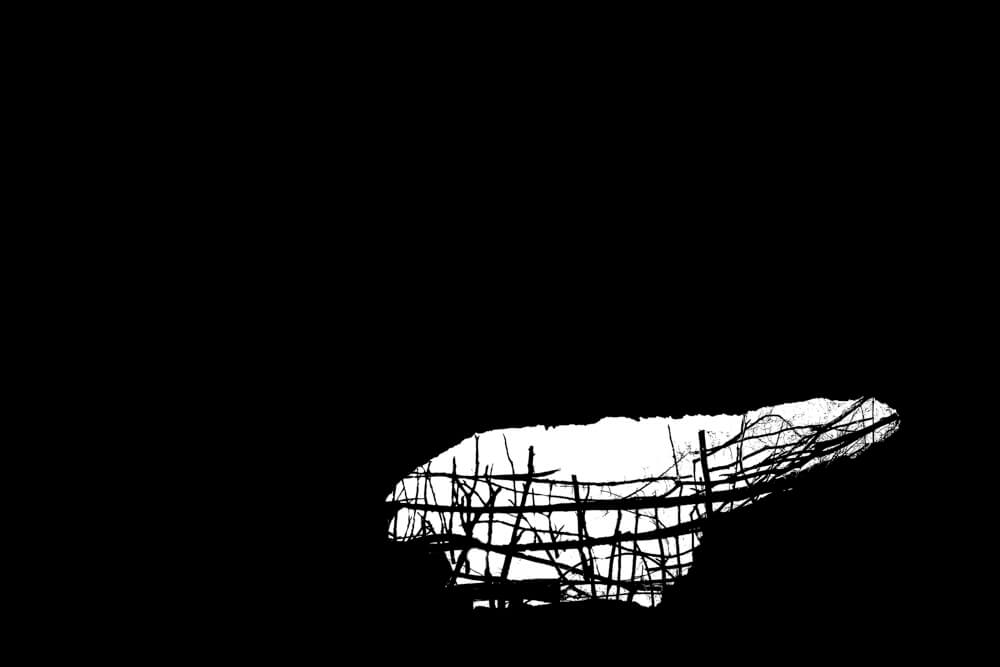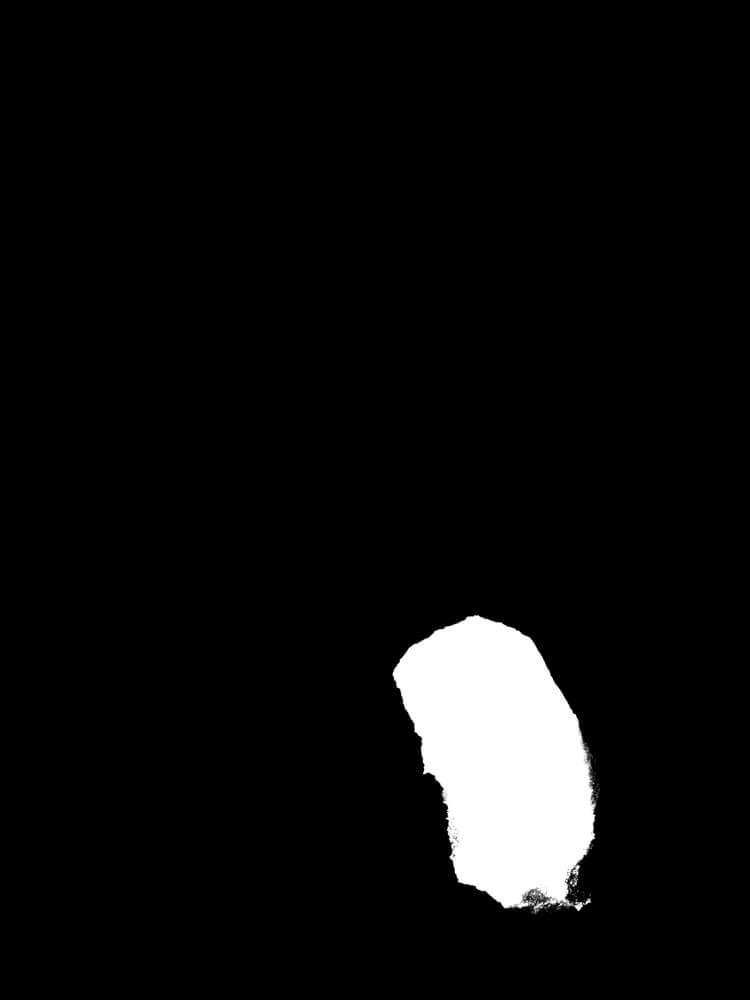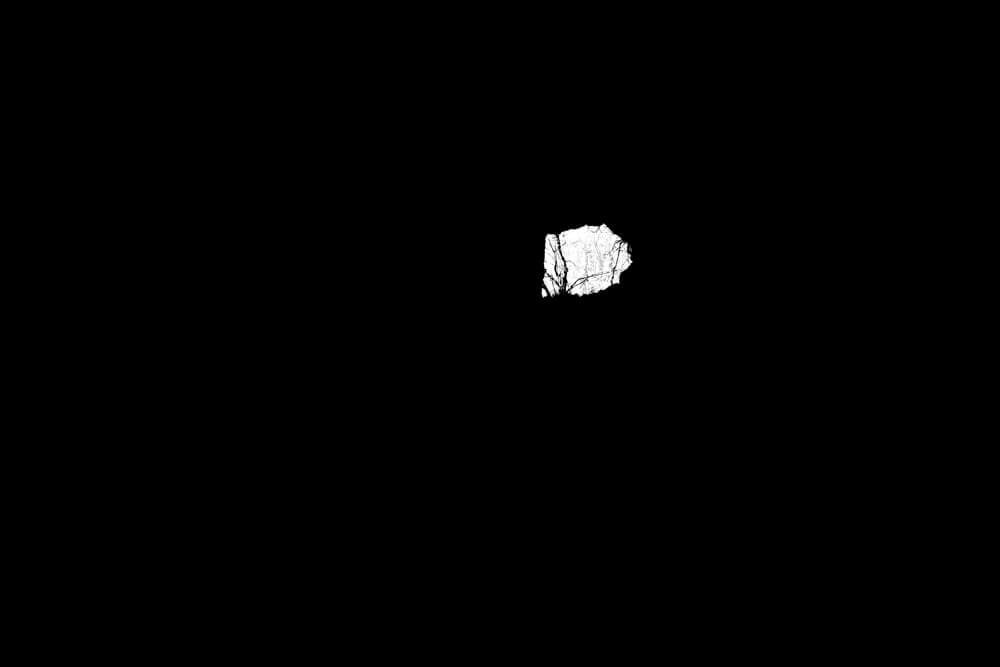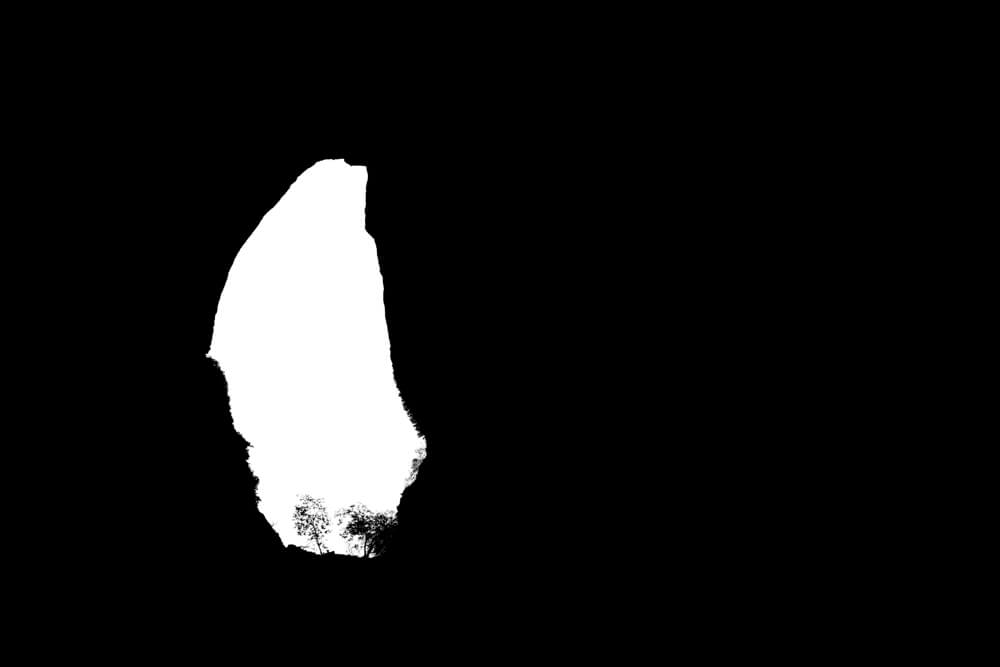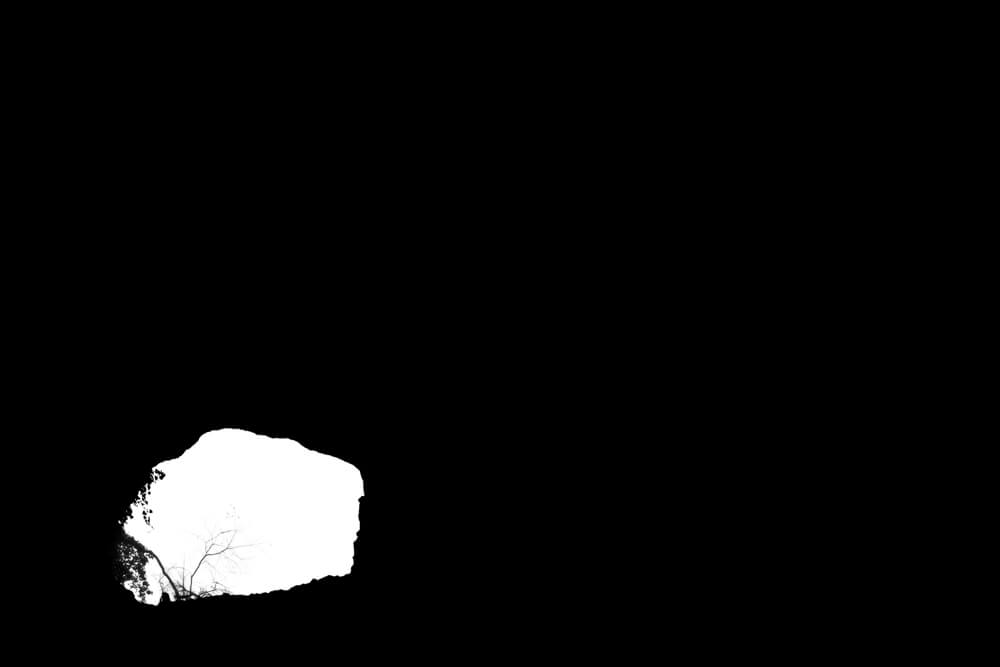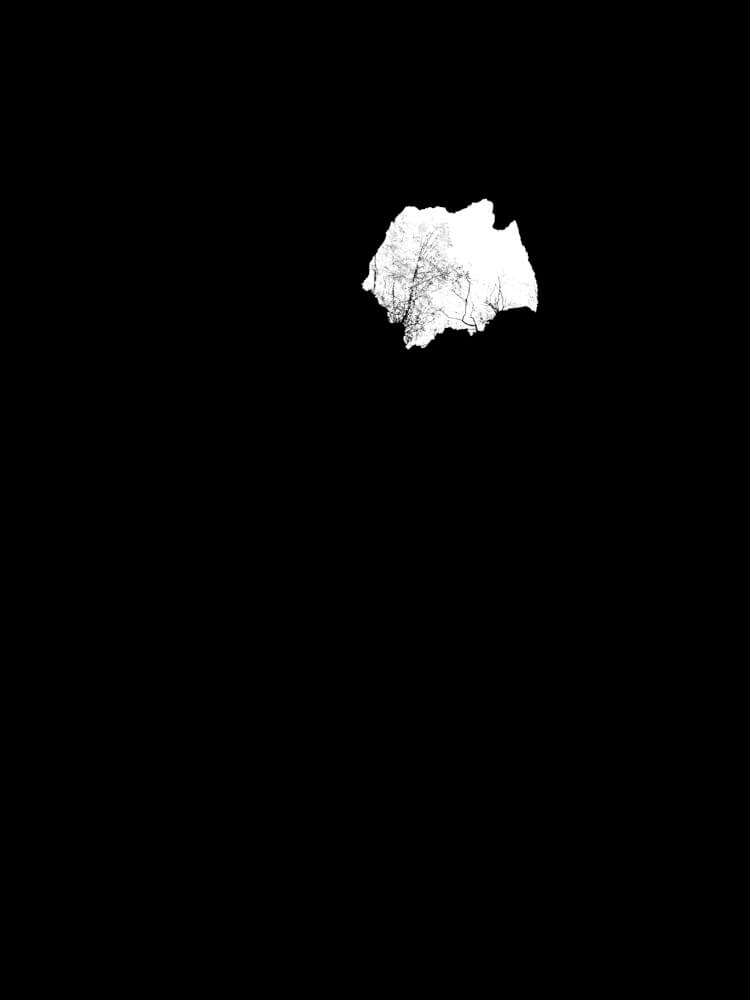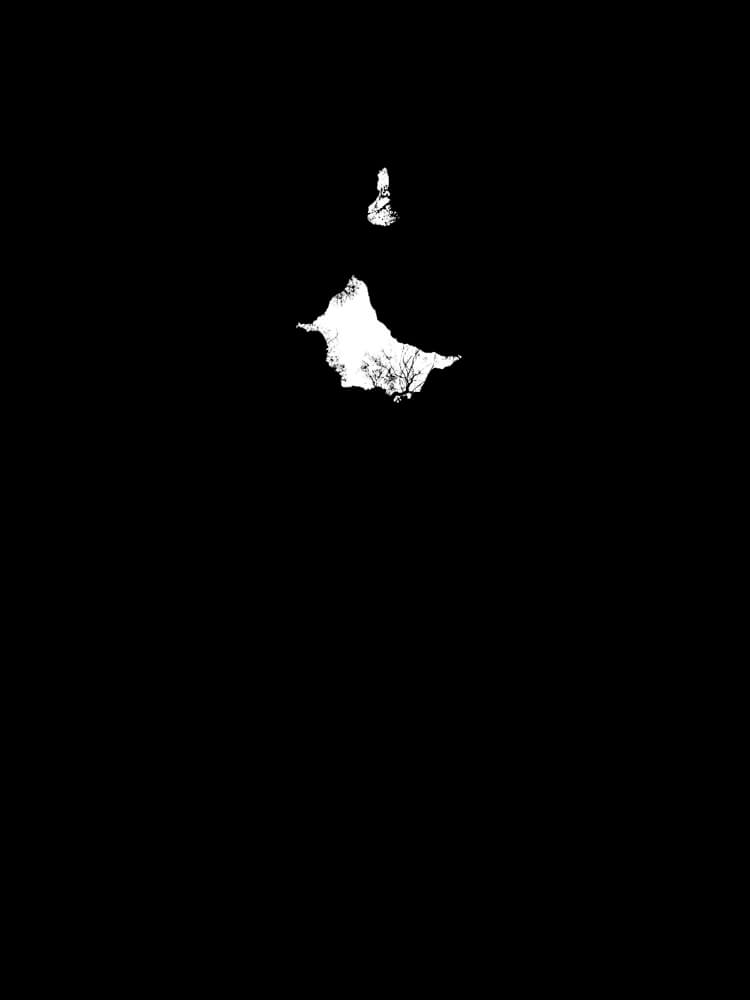Caves are among the last unexplored realms on our planet. We still don’t know where the deepest cave lies — and perhaps we never will. For millennia, caves have drawn people in. In prehistoric times, they offered sanctuary or were charged with supernatural meaning. Today, we descend into the underground for different reasons.
To stand in a cave is to stand in a space where our distant ancestors once dwelled — sometimes a few million years ago. Here, Paleolithic humans lived and left behind traces of their presence, using cave walls as their canvases.
Eternal darkness — blackness — is the immediate association we have with caves. Yet around each entrance there is a liminal zone, a delicate threshold where daylight dissolves into shadow. The eye, enclosed by cave walls, turns to the entrance, which becomes something like a cinema screen — a projection of the world outside.
When you step deeper into the darkness and look back, you realize what you are leaving behind: light. Looking out toward the sky, you begin to wonder — were our ancestors’ attempts to cover the cave entrance simply imperfect enough to let a few rays of sunlight slip through a hole in fur or skin, creating a primitive camera obscura? Did these flickers of light and shadow transform caves into archaic cinemas?
How did they feel in the darkness of the void? How different are our own fears — or exhilaration — when we step into the unknown, and then re-emerge to see the sky again?
What color was their sky?
Published as an artist book: Void


